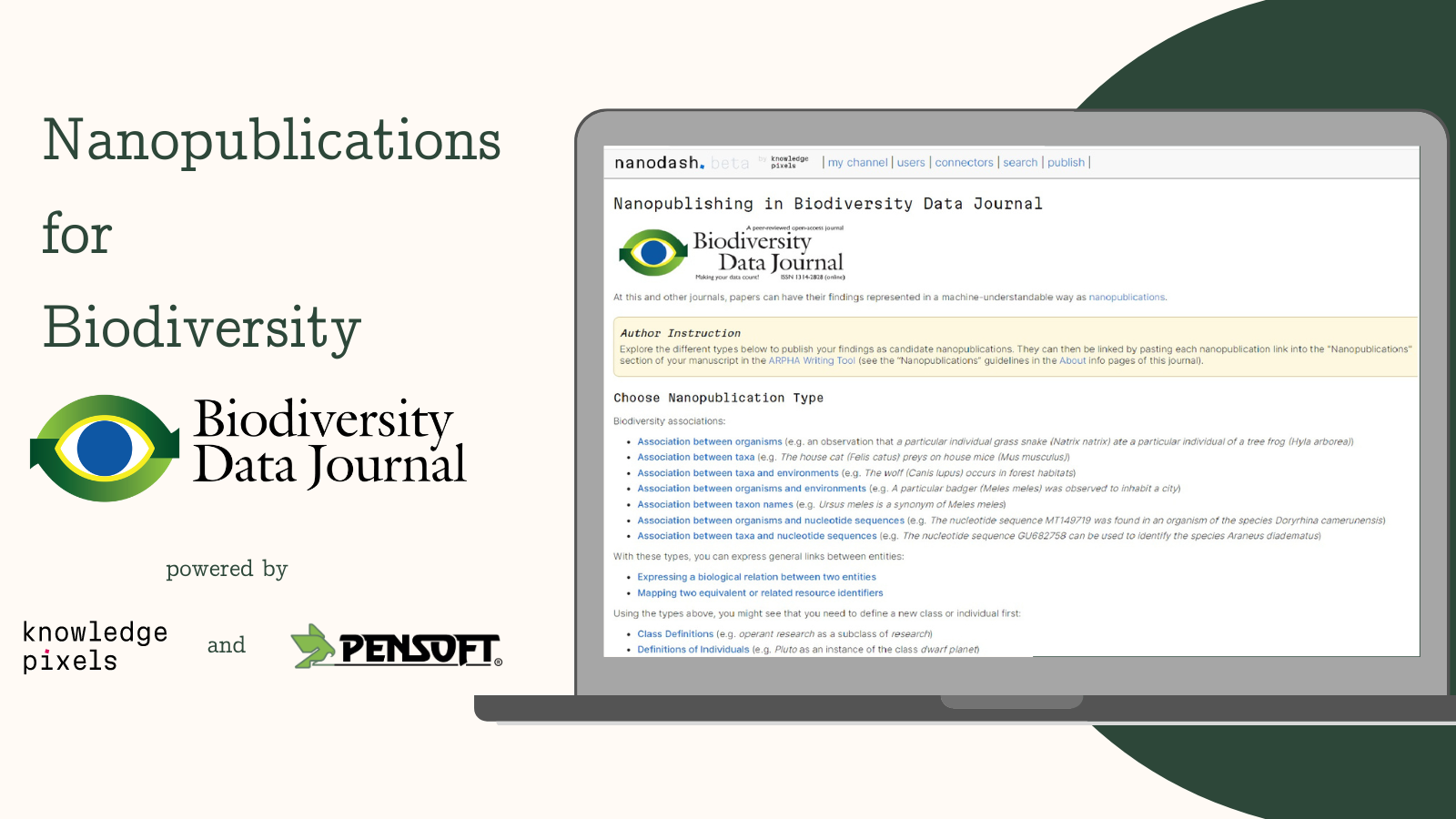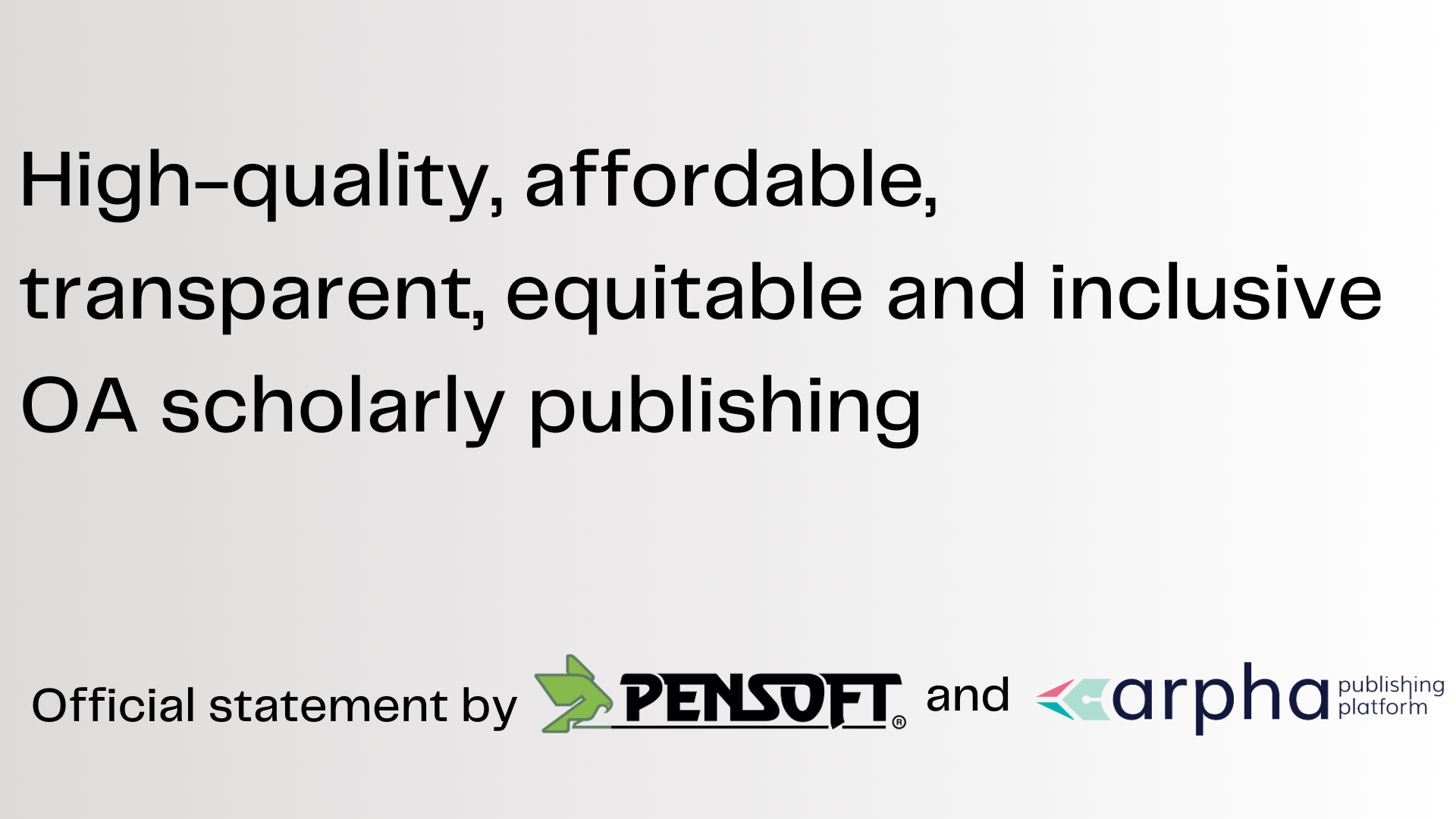On behalf of ARPHA Platform and Pensoft Publishers, we express our support for the Conclusions on high-quality, transparent, open and equitable scholarly publishing, recently published by the Council of the European Union. We do share all concerns articulated in the document that highlight major inequities and outstanding issues in the scholarly publishing environment.
In our opinion, it is of utmost importance to promptly address the existing issues in the publishing system, where healthy competition can thrive and contribute to a reality safe from potential mono-/oligopolies and corporate capture.
We firmly believe that only an industry that leaves room for variously-scaled pioneers and startups is capable of leading a long-awaited shift to a high-quality, transparent, open and equitable scholarly publishing landscape aligning with the principles of FAIRness.
Yet, we shall acknowledge that the industry has so far failed to eradicate the most fundamental flaw of the past. In the beginning, the main aim of the Open Access (OA) movement was removing the barrier to access to publicly funded scientific knowledge and scrapping costly subscription fees.
Recently, however, the industry’s biggest players merely replaced it with a barrier to publication by introducing costly Article Processing Charges (APCs) and “big deals” signed between top commercial publishers and academic institutions or national library consortia.
As a result, small and middle-sized open-access publishers, which have, ironically, been the ones to lead the change and transition to OA by default and oppose the large commercial publishers’ agenda, were effectively pushed out of the scene. Further, we are currently witnessing a situation where OA funds are mostly going to the ones who used to oppose OA.
So, we strongly support measures that ensure an inclusive and FAIR competition, which could in turn prompt quality, sustainability and reasonable pricing in scholarly publishing. In our opinion, an environment like this would actually foster equality and equity amongst all publishers, either small, large, non-profit, commercial, institutional or society-based.
One of the main points of the conclusions is a recommendation for a general use of the Diamond OA model, where no charges apply to either researchers or readers. While we fully support the Diamond OA model, we wish to stress on the fact that considerable concerns about the sustainability of existing Diamond OA models remain.
On the one hand, there are OA agreements (also known as read-and-publish, publish-and-read, transformative agreements etc.), typically signed between top publishers and top research institutions/consortia. This OA model is often mistakenly referred to as “Diamond OA”, since authors affiliated with those institutions are not concerned with providing the APC payment – either by paying themselves or applying for funding. Instead, the APCs are paid centrally. Most often, however, journals published by those publishers are still directly charging authors who are not members of the signed institutions with, in our opinion, excessive APCs. Even if those APCs are covered by a signed institution, these are still considerable funds that are being navigated away from actual research work.
On the other hand, there are independent researchers, in addition to smaller or underfunded institutions, typically – yet far from exclusively – located in the developing world, who are effectively being discriminated against.
In conclusion, this type of contracts are shutting away smaller actors from across academia just like they used to be under the subscription-based model. Hereby, we wish to express our full agreement with the Council of the European Union’s conclusion, that “it is essential to avoid situations where researchers are limited in their choice of publication channels due to financial capacities rather than quality criteria”.
There are also several alternative OA models designed to lessen the burden of publication costs for both individual researchers, libraries and journal owners. However, each comes with its own drawbacks. Here – we believe – is where the freedom of choice is perhaps most needed, in order to keep researchers’ and publishers’ best interests at heart.
One of those alternatives is open-source publishing platforms, which – by design – are well-positioned to deliver actual Diamond OA for journals, while maintaining independence from commercial publishers. However, the operational model of this type of publishing and hosting platforms would most often only provide a basic infrastructure for editors to publish and preserve content. As a result, the model might require extra staff and know-how, while remaining prone to human errors. Additionally, a basic technological infrastructure could impede the FAIRness of the published output, which demands advanced and automated workflows to appropriately format, tag semantically and export scientific outputs promptly after publication.
Similarly, large funders and national consortia have put their own admirable efforts to step up and provide another option for authors of research and their institutions. Here, available funds are allocated to in-house Diamond OA publishing platforms that have originally been designed according to the policies and requirements of the respective funding programme or state. However, this type of support – while covering a large group of authors (e.g. based in a certain country, funded under a particular programme, and/or working in a specific research field) – still leaves many behind, including multinational or transdisciplinary teams. Additionally, due to the focus on ‘mass supply’, most of these OA publishing platforms have so far been unable to match their target user base with the appropriate scale of services and support.
What we have devised and developed at Pensoft with the aim to contribute to the pool of available choices is an OA publishing model, whose aim is to balance cost affordability, functionality, reliability, transparency and long-term sustainability.
To do so, we work with journal owners, institutions and societies to create their own business and operational model for their journals that matches two key demands of the community: (1) free to read and free to publish OA model, and, (2) services and infrastructure suited for Diamond OA at a much lower cost, compared to those offered by major commercial publishers.
In our opinion, independent small publishers differentiate from both large commercial publishers and publicly funded providers by relying to a greater extent on innovative technology and close employee collaboration.
As a result, they are capable of delivering significantly more customisable solutions – including complete packages of automated and human-provided services – and, ultimately, achieving considerably lower-cost publishing solutions. Likewise, they might be better suited to provide much more flexible business models, so that libraries and journal owners can easily support (subsets of or all) authors to the best of their capabilities.
While we realise that there is no faultless way to high-quality, transparent, open and equitable scholarly publishing, we are firm supporters of an environment, where healthy competition prompts the continuous invention and evolution of tools and workflows.
Our own motivation to invest in scholarly publishing technology and its continuous refinement and advancement, coupled with a number of in-house and manually provided services, which is reflected in our APC policies, aligns with the Council’s statement that “scientific practices for ensuring reproducibility, transparency, sharing, rigour and collaboration are important means of achieving a publishing system responsive to the challenges of democratic, modern and digitalised societies.”
Our thinking is that – much like in any other industry – what drives innovation and revolutionary technologies is competition. To remain healthy and even self-policing, however, this competition needs to embrace transparency, equity and inclusivity.
Last, but not least, researchers need to have the freedom to choose from plenty of options when deciding where and how to publish their work!




